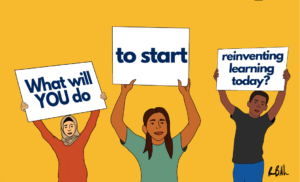How to fix failing schools
The National Journal question this morning was, “What are the best methods for school improvement?”
We’ve learned a good deal about improving elementary schools in the last decade. A focused leader, data driven instruction, and improved time on task can quickly boost lagging reading and math scores.
Secondary schools are a different matter. The only thing wrong with a failing high school is everything–course offering, instruction, student support, scale, structure, culture and community connections. Changing all these variables rapidly is a challenge.
The Department has laid out four improvement strategies. In order of severity, they include transformation, turnaround, restart, and closure. For low achievement, low attainment high schools, closure and replacement (‘restart’) is the only option for dramatic improvement. This strategy has been used successfully in New York, Chicago, New Orleans, and Philadelphia. It looks promising in LA.
Capacity is another consideration. There are dozens of charter management organizations with a track record of opening high performing secondary schools. There are few organizations that have a track record of turning around failing high schools (New Visions in NYC and MLA Partner Schools in LA are giving it a good run).
However, restarts require a good dose of political capital–more than most state or local superintendents are willing to spend. Perhaps the dangling billions of ARRA will bolster courage.






Tom Sundstrom
Plans for fixing struggling schools will be an important element of any State's RttT application. I think I've seen the solution to everything except, how to deal with virtually every existing student's need for customized learning plans. How do you recast the "work in progress" students into the "remodeled" school structure? Dealing with getting these students through the system propery would seem to be the biggest obstacle, but I haven't seen anything written on an approach.
Replies
Tom Vander Ark
Targeted student support will be part of all successful turnarounds. I'm optimistic about the contribution of some SES providers/solutions. When Green Dot took over Locke, they included an AdvancePath.com academy for over-aged/under credited kids (ie, juniors 2 years behind).